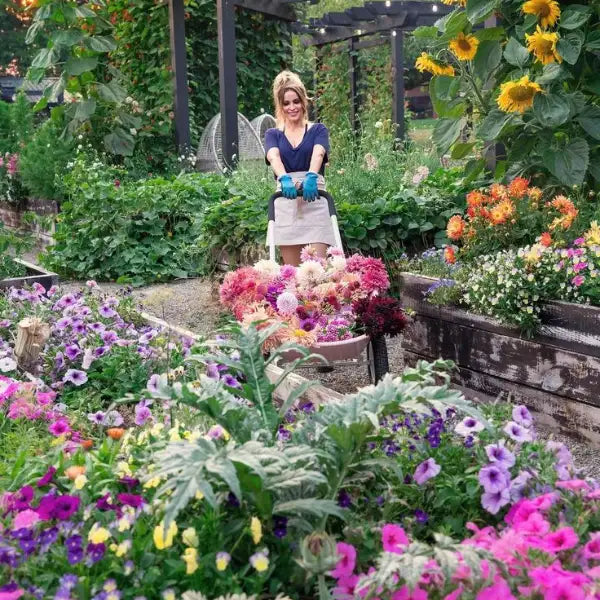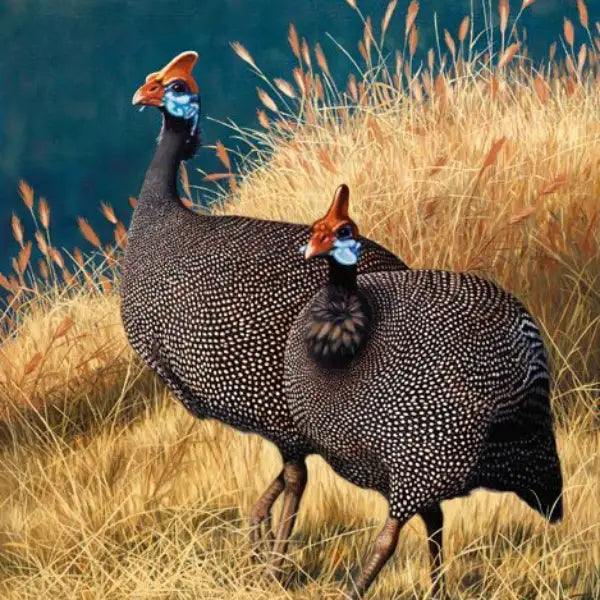Colorful birds bring vibrant life to any garden, adding a touch of natural beauty. However, the same creatures can also become destructive pests. From stealing food to damaging crops, unwanted birds can quickly turn a flourishing habitat into a scene of devastation if eco-friendly bird control methods aren’t applied.
These methods prioritize humane deterrence and environmental sustainability while maintaining harmony with nature.
Let's learn more about eco-friendly bird control and why it is important for your garden. We will also learn how to maintain a healthy balance that keeps pest birds away from your growing garden.

What is Eco-Friendly Bird Control?
Eco-friendly bird control is an approach to managing pest birds that damage gardens, vineyards, and agricultural crops. It focuses on creating an environment that is less inviting to birds. This is usually done without using harmful chemicals or lethal bird-repelling methods.
The solutions include various physical and natural methods to repel pest birds. For example, physical barriers like bird netting and visual deterrents such as reflective tapes disrupt and disorient birds. The goal is to discourage birds from unwanted areas while protecting the ecosystem.
Importance of Bird Control for Agriculture / Farms and Crops
Birds can be highly beneficial to your garden by pollinating and consuming pests. However, when their numbers grow too large, they can cause serious crop damage and economic loss.
Here are some key reasons why you need effective methods to deter nuisance birds and protect crops, gardens, and vineyards.

1. Protecting Human Health
Birds can carry diseases and parasites that pose significant health risks. Research indicates that birds and their droppings may be linked to over 60 diseases. This is particularly concerning in large farms and agricultural settings. Farmers are often exposed to higher concentrations of bird droppings and potential pathogens.
Below are some examples of transmissible bird diseases associated with pigeons, geese, starlings, and house sparrows:
- Histoplasmosis: It is a fatal respiratory disease caused by a fungus that thrives in dried bird droppings.
- Cryptococcosis: This is a fungal infection caused by yeast found in the intestinal tracts of birds like pigeons and starlings. Cryptococcosis starts as a pulmonary disease and can affect the central nervous system.
- Candidiasis: Another fungal infection spread by pigeons, impacting the skin, respiratory system, and digestive tract.
2. Conserving Water Resources
Bird droppings, especially those from ducks and geese, contaminate water resources. These droppings often contain dangerous pathogens like E. coli, Salmonella, Cryptosporidium, and Campylobacter. Cryptosporidium can transmit directly to humans, causing conditions like diarrhea, stomach cramps, nausea, vomiting, and fever.
Therefore, it is important to implement effective bird control methods around farms and gardens located near water bodies. Keep ducks, birds, geese, and sparrows away from water resources. This proactive approach keeps the water clean and protects human health.

3. Preserving Biodiversity and Ecosystems
Birds are the guardians of our ecosystem and maintain biodiversity. Pollinators, like hummingbirds and honeyeaters, spread seeds and facilitate plant reproduction. Predatory birds regulate populations of insects, rodents, and other small animals, preventing overpopulation.
However, the excessive population of certain birds can disrupt this delicate balance.
Employ sustainable bird control methods to maintain bird populations at healthy levels. This allows them to continue their essential roles and stabilize our natural ecosystem.
4. Promoting Bird Welfare
We often use chemical pesticides in orchards and vineyards to protect fruit trees and crops from pests. Birds, seeking food in trees and berry bushes, are exposed to the toxins in these pesticides. They can cause serious sublethal effects, particularly during birds' reproductive stages.
Predatory birds (falcons, seagulls) can suffer from secondary poisoning after consuming contaminated prey. This highlights the importance of using bird deterrents to protect the bird population. A non-hazardous and natural bird control system protects birds from poisoning and safeguards their well-being.

Best Eco-Friendly Bird Control Methods For Your Farms and Gardens
Now you know the importance of a bird control system for your farms and gardens. Let's move further and see some of the best environmentally friendly bird control methods:
1. Bird Netting
Garden bird netting is an inexpensive and highly effective bird control method. Birds love to peck at fruits, seeds, and vegetables. Their feeding habits can quickly ruin an entire crop. This damage leads to reduced yields and economic losses for farmers.
Bird netting creates a physical barrier and prevents pests, birds, and rain ( to a certain extent) from reaching valuable crops. This simple step also prevents bird-borne diseases, which minimizes the risk of contamination. In short, bird netting is a reliable solution for healthier plants and a more productive garden or farm.

2. Butterfly Netting
Butterflies are a great addition to any garden, aiding pollination and natural pest control. But the same butterflies can do massive harm to vegetable farms. They lay eggs on plants, and the caterpillars that hatch feed on leaves and can damage or even destroy crops. This is especially true for cabbage, broccoli, cauliflower, and other Brassica family plants.
Butterfly netting is a fantastic way to protect plants and crops from butterflies and their caterpillars. It is durable, lightweight, and UV-protected, ensuring long-lasting protection for your garden.

3. Reflective Tape
Reflective or flash tape is a clever and multisensory way to repel pest birds. It is usually made of highly reflective material, like Mylar, that reflects sunlight. It creates a bright, confusing visual effect that disorients and scares birds away.
When the wind blows, the tape also moves and makes noise, adding another layer of deterrence. This combination of flashing light and sound effectively scares birds without harming them. It is a humane and chemical-free method to protect crops and avoid bird problems.

4. Bird Strobe Lights
Thinking about a quiet yet powerful bird control method? Try strobe lights. These lights emit high-speed, intense light beams that deter nuisance birds. Strobe lights can also deter wildlife, such as deer, squirrels, and other critters that can damage gardens or agricultural lands.
The disorienting flash of strong light disrupts the animal's vision and forces them to avoid the area. It's a wide-ranging and harmless way to protect your crops and gardens from both pests and wildlife.

5. Essential oils
Certain aromas and smells can quickly repel pest birds. These scents include peppermint, garlic, and lemon. You can use different essential oils and even make your own organic bird repellent at home. Mix a few drops of your chosen essential oil with half a cup of water and a small amount of dish soap. You may add a few drops of vinegar as well.
Spray the solution on areas where you want to deter birds. This method is highly effective for crows, sparrows, and other birds. Alternatively, try using strong-smelling spices like cayenne pepper or chili powder around infected areas.

6. Hawk Kites
Hawk kites are bird deterrents that mimic the flight and look of predatory birds like hawks or falcons. They are designed from durable, lightweight rip-stop nylon with carbon fiber spars for realistic flights. The purpose is to scare away unwanted birds from gardens and agricultural land.
The effectiveness of a hawk kite lies in its ability to replicate the natural hunting behavior of a hawk. These kites move in a way that mimics a hawk or falcon searching for prey on the ground. It triggers an instinctive fear response in the birds, and they avoid certain areas.

7. Maintaining Cleanliness
Keeping your garden or orchard clean is a great way of bird control. Birds are naturally attracted to food sources like spilled seeds or fallen fruit. Regularly clean up these items and anything that attracts birds, such as pet food or standing water.
Removing food sources is less likely to make them want to visit and stay. This way, you can prevent bird problems even before they start and protect your garden.

8. Appropriate Bird Feeding Practices
While bird control is important, remember that they are also necessary for a healthy garden ecosystem. Attracting the right species maintains natural pest control and pollination. Opt for thoughtful bird-feeding practices that support nature's needs.
Offer a variety of feeds like seeds, nuts, and suet, which attract different bird species. Consider using smart bird feeders, which regulate the amount of food dispensed and minimize waste. Don't forget to grow native plants. For instance, planting milkweed attracts monarchs; their caterpillars are a vital food source for birds. These small, thoughtful practices keep your garden's ecosystem healthy and thriving.

Conclusion
Eco-friendly bird control isn’t about keeping birds away—it’s about keeping the right balance. With smart, humane methods like netting, reflective deterrents, and clean garden habits, you can protect your crops without harming wildlife. Thoughtful feeding practices and modern tools like smart bird feeders further help you maintain a healthy, vibrant ecosystem where both your garden and nature can thrive together.
FAQs
1. What is the best bird deterrent for vegetable gardens?
For vegetable gardens, a combined approach would be most effective. Start with netting to create a physical barrier. Supplement this with reflective tape or strobe lights to disorient birds. Also, clean your garden on a regular basis.
2. Are there any plants that naturally repel birds?
Certain plants can naturally deter birds due to their strong scents and textures. Plants like mint, garlic, and marigolds are known to repel some bird species. Planting these strategically around your garden can act as a natural repellent.
3. How do I prevent birds from nesting in unwanted areas of my farm building?
Regularly inspect your farm building for potential nesting sites such as eaves, rafters, or vents. When planning bird control, don't overlook food storage areas. Protect these spaces with netting and solid barriers. Install bird spikes on ledges to prevent perching. Make sure that there are no food sources nearby.




Leave a comment
All comments are moderated before being published.
This site is protected by hCaptcha and the hCaptcha Privacy Policy and Terms of Service apply.